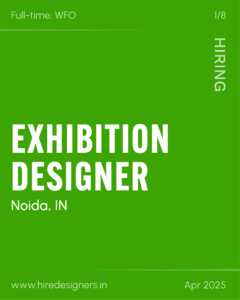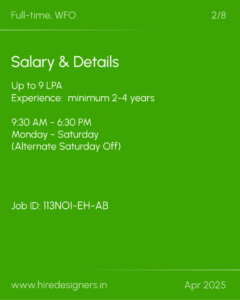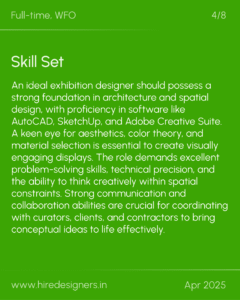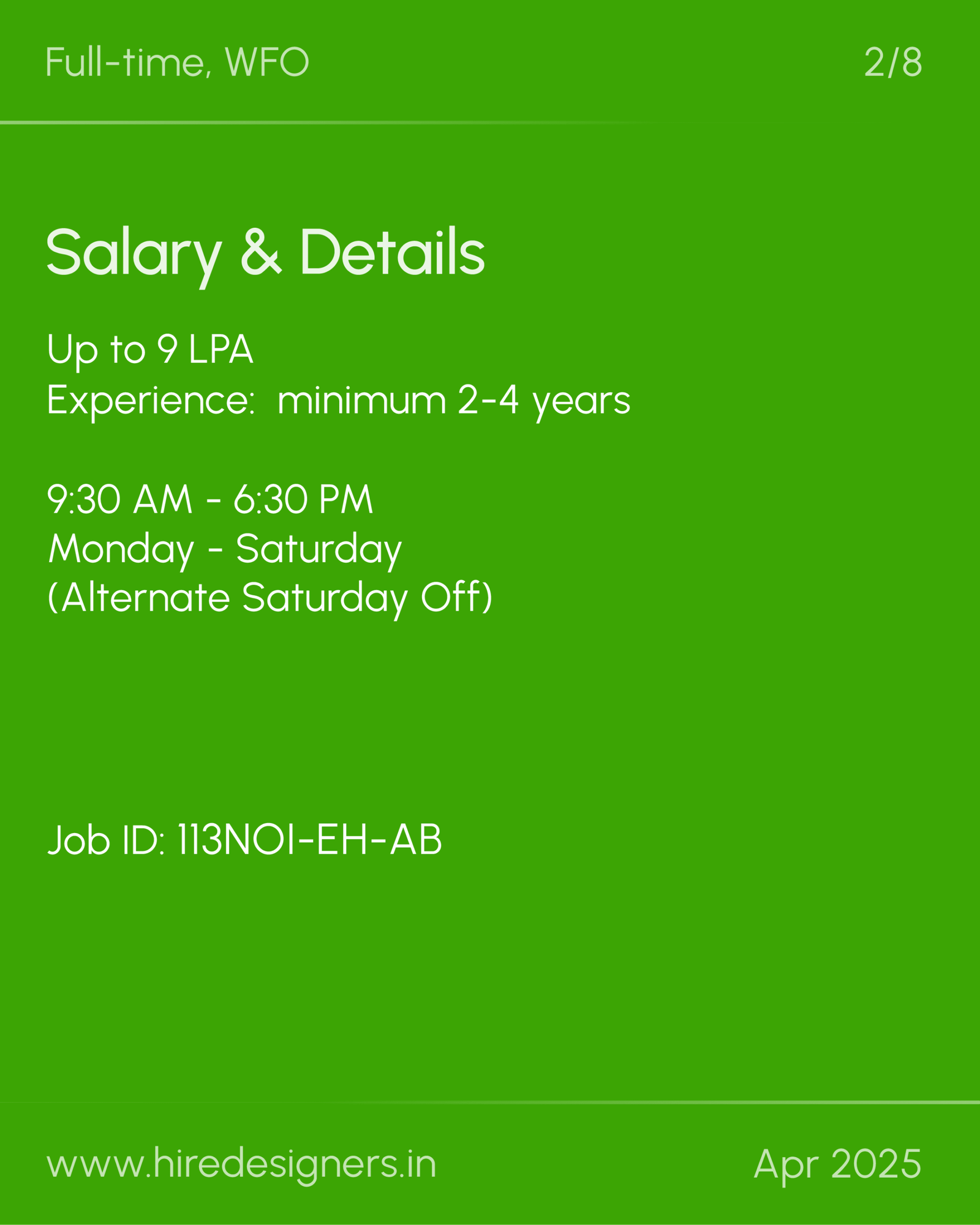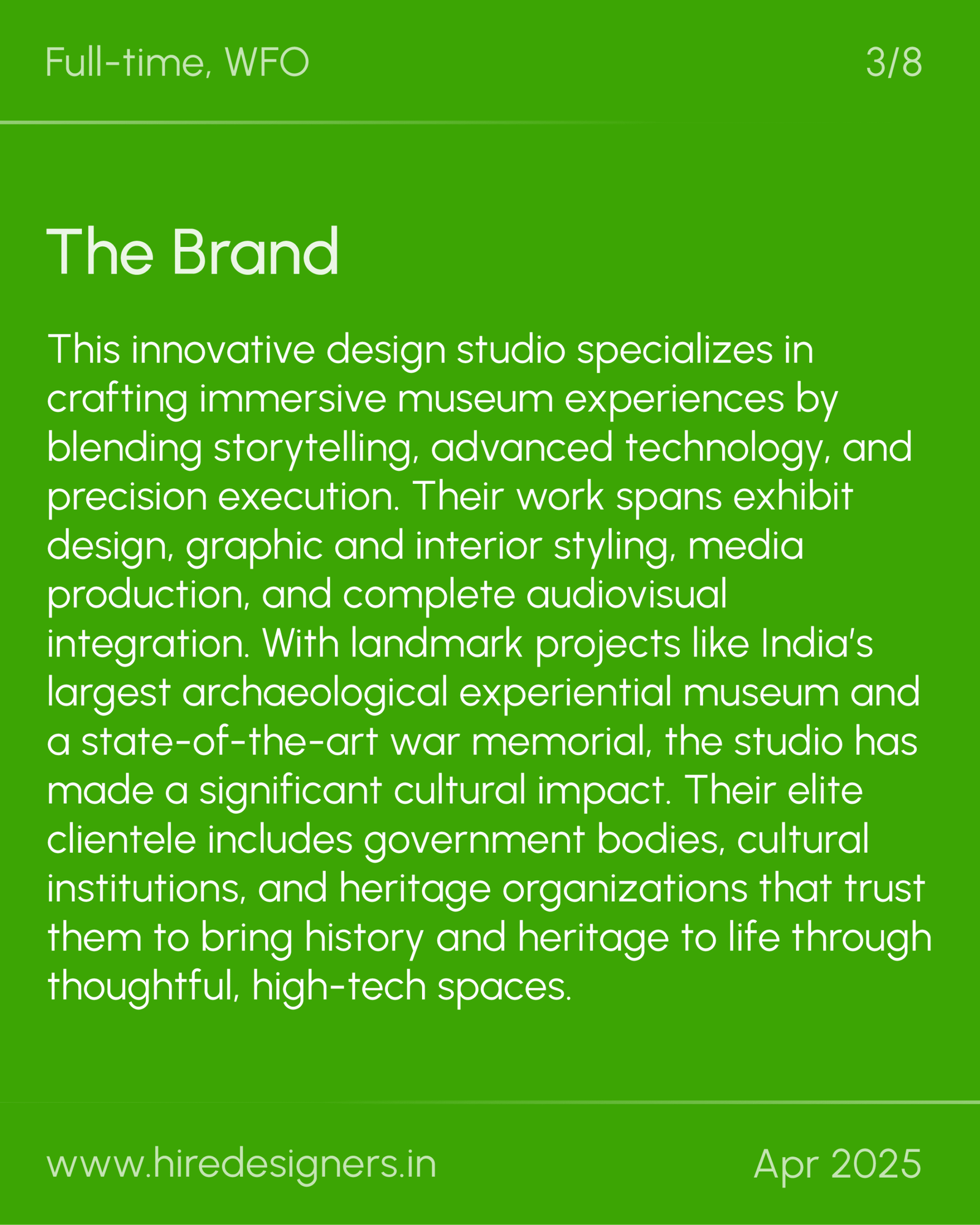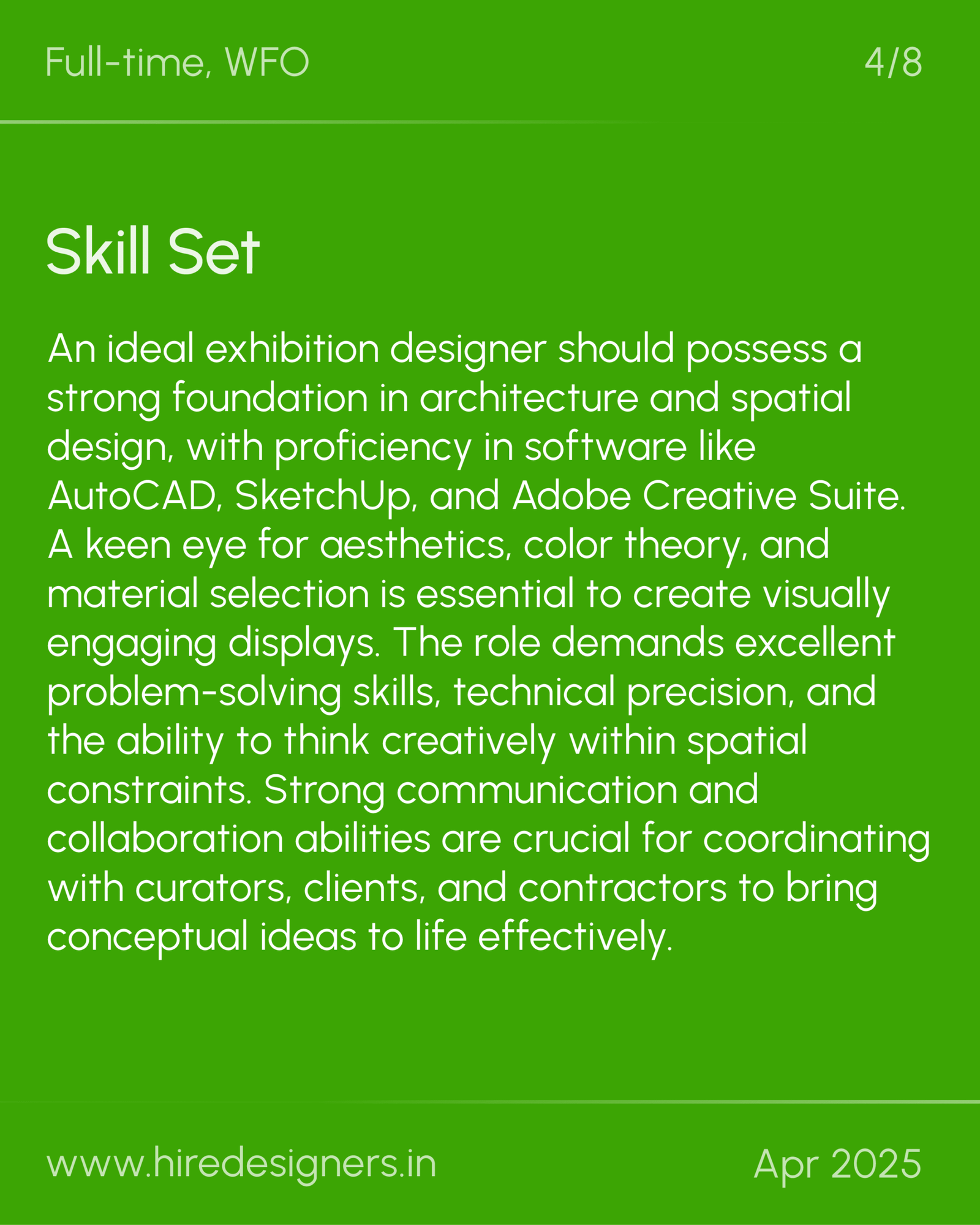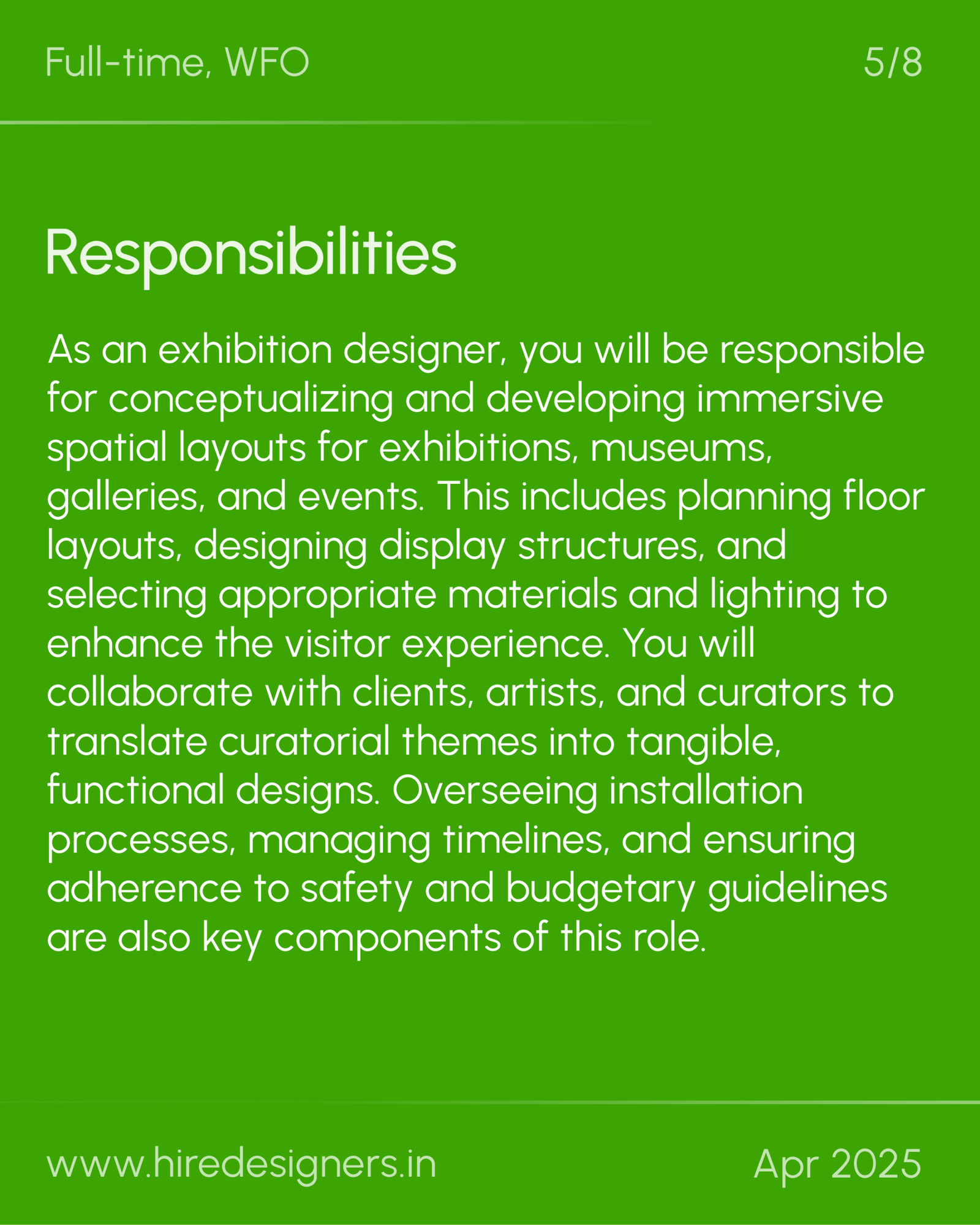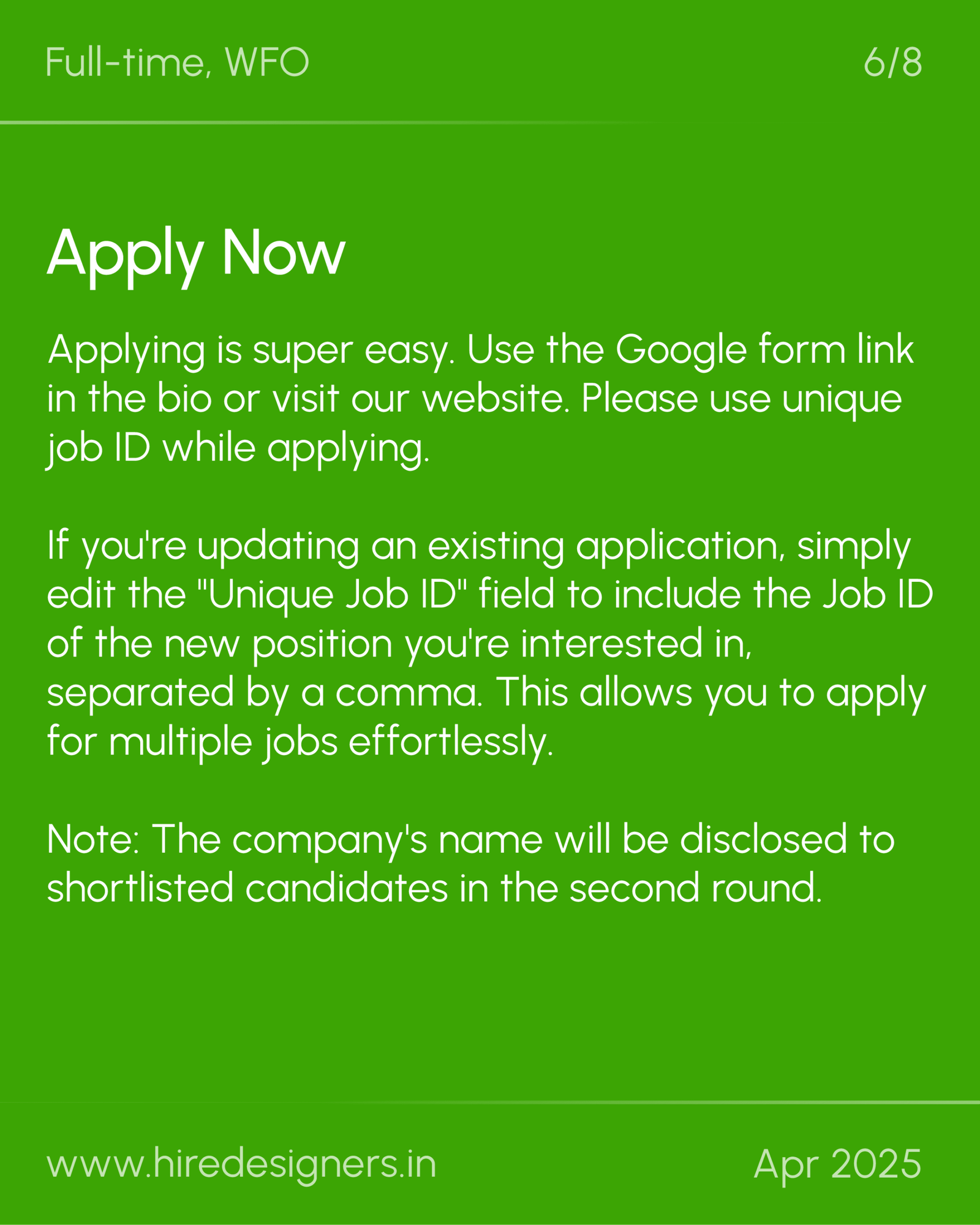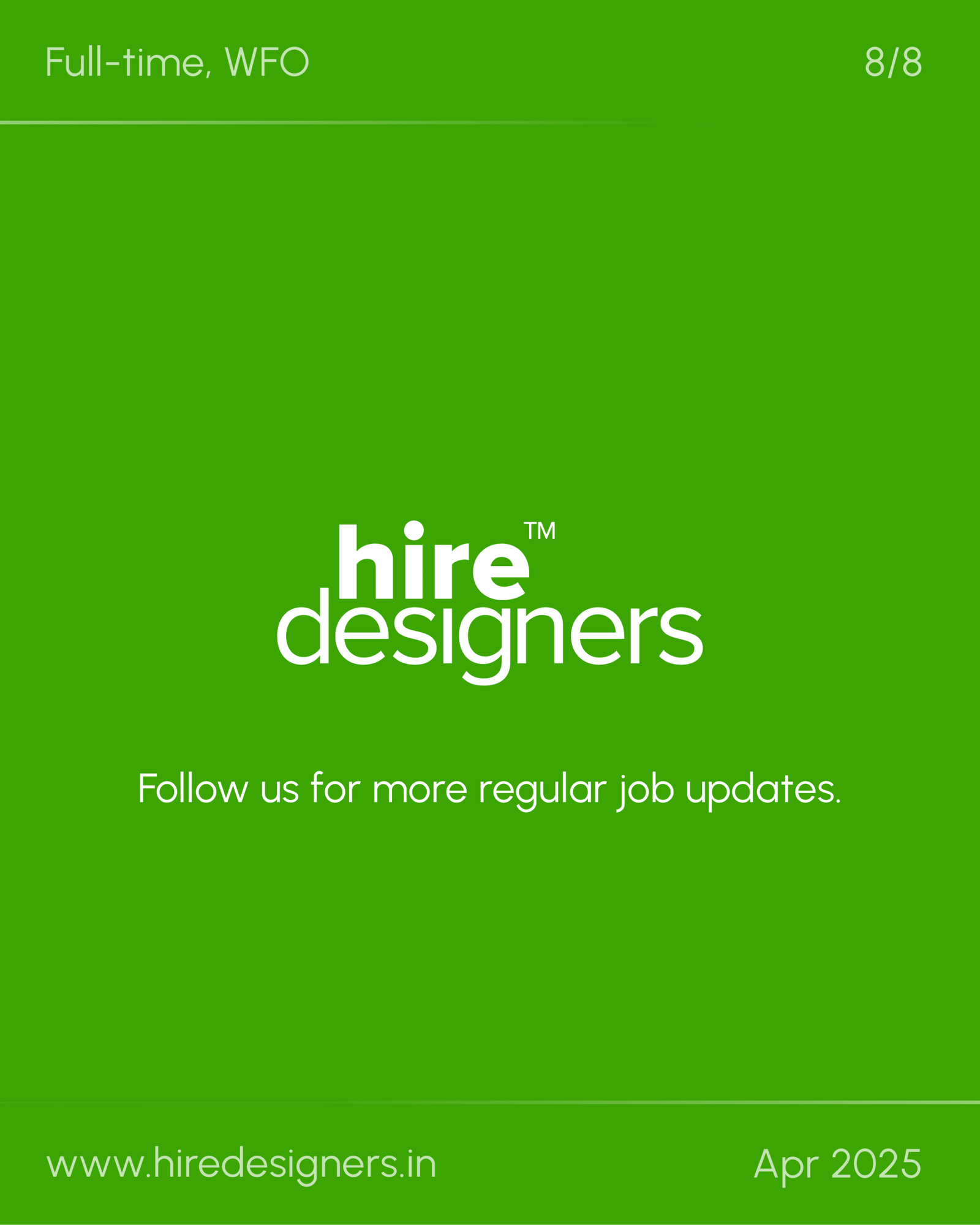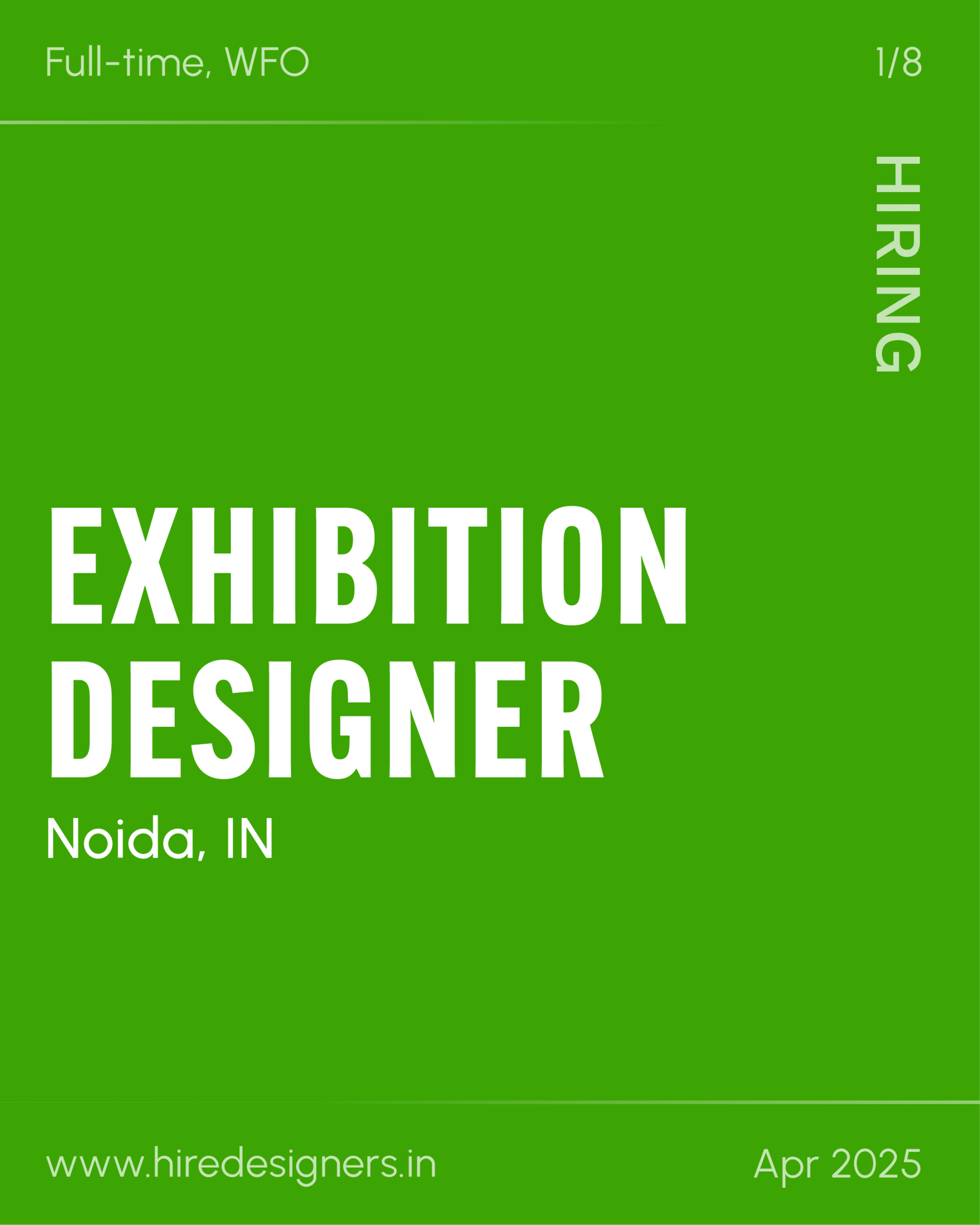
04 Jun Exhibition Designer
Salary & Details
Salary: Upto 9 LPA
Experience: 2-4 years
Monday to Saturday (Alternate Saturdays Off)
9:30 AM – 6:30 PM
The Brand
This innovative design studio specializes in crafting immersive museum experiences by blending storytelling, advanced technology, and precision execution. Their work spans exhibit design, graphic and interior styling, media production, and complete audiovisual integration. With landmark projects like India’s largest archaeological experiential museum and a state-of-the-art war memorial, the studio has made a significant cultural impact. Their elite clientele includes government bodies, cultural institutions, and heritage organizations that trust them to bring history and heritage to life through thoughtful, high-tech spaces.
Skill Set
An ideal exhibition designer should possess a strong foundation in architecture and spatial design, with proficiency in software like AutoCAD, SketchUp, and Adobe Creative Suite. A keen eye for aesthetics, color theory, and material selection is essential to create visually engaging displays. The role demands excellent problem-solving skills, technical precision, and the ability to think creatively within spatial constraints. Strong communication and collaboration abilities are crucial for coordinating with curators, clients, and contractors to bring conceptual ideas to life effectively.
Responsibility
As an exhibition designer, you will be responsible for conceptualizing and developing immersive spatial layouts for exhibitions, museums, galleries, and events. This includes planning floor layouts, designing display structures, and selecting appropriate materials and lighting to enhance the visitor experience. You will collaborate with clients, artists, and curators to translate curatorial themes into tangible, functional designs. Overseeing installation processes, managing timelines, and ensuring adherence to safety and budgetary guidelines are also key components of this role.
